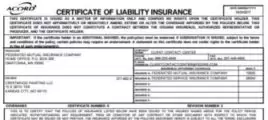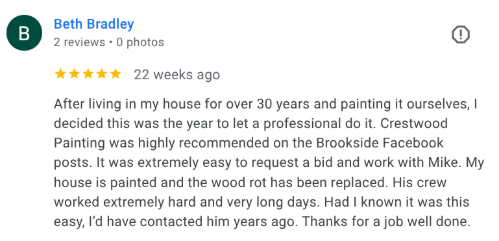Compare Painting Bids

Compare Apples to Apples
Painting bids vary—but a higher price or lower number doesn’t mean much unless you understand what’s included.
When reviewing painting estimates, it’s tempting to focus on the bottom line. But a $10,000 job and a $12,000 job aren’t necessarily different in price—they might be wildly different in scope. What’s included? What’s not? What quality of paint? What level of prep?
Before you compare price, make sure you’re comparing what each bid actually delivers.
Who Provides the Materials—and Why It Matters
Whether or not materials are included can affect costs, quality, and transparency.
Some contractors include the cost of materials in their bid. Others ask the homeowner to purchase them. This affects more than just logistics—it changes incentives. If materials aren’t included, there’s little pressure for the contractor to accurately estimate quantities or reduce waste.
When materials are included, the contractor is putting their expertise on the line—and that usually results in better estimates, better planning, and fewer surprises.
Paint, Caulk, and Primer Quality Varies Widely
Not all materials are equal—good painters explain their product choices and stand behind them.
A Wide Range of Product Lines
Major paint companies are multi-billion-dollar operations, and each offers a full lineup of products—from contractor-grade to premium formulas. That’s true for primer and caulk, too.
When a painter says “We use Sherwin-Williams,” that tells you almost nothing. Which line? What sheen? Is it designed for high-traffic interiors, exterior siding, or metal railings? The details matter.
Workman’s comp insurance is required by law; liability insurance is required by common sense. Some painters have neither.
When Fewer Coats Tell You More
High-quality paint often provides better coverage with fewer coats. But that only works if it's applied according to the manufacturer’s system—some painters use one coat of a two-coat product to save time.
It’s worth asking about the expected number of coats, and what specific product is being used. Otherwise, you're not comparing paint jobs—you're comparing paint shortcuts.
Insurance and Credentials Are Non-Negotiable
If something goes wrong, the right insurance protects you—the wrong answer could cost you.
Too many contractors work without basic insurance, hoping nothing goes wrong. But ladders fall, windows break, and people get hurt. Without proper coverage, those risks can fall to the homeowner.
Be sure to get an industry-standard ACORD certificate from whomever you hire to do the work. For more insight, see the top 5 uninsured contractor questions every homeowner should ask before signing anything.

Time, Communication, and Cleanliness
From first contact to final cleanup, professional painting should feel organized, responsive, and respectful.
A quality contractor responds to inquiries promptly, sends follow-up emails when promised, and delivers a detailed timeline that matches the job. Missed calls and vague answers early in the process often signal future frustrations.
During the job, cleanliness and courtesy matter too. Is there a clear daily routine? Do crews keep things tidy and wrap up on time? These small signals often reflect a larger commitment to professionalism.
The Crew Behind the Brush
The difference between skilled professionals and unsupervised day labor is easy to see once the job is underway.
A solid estimate and friendly salesperson are a great start—but the crew that shows up to do the work makes or breaks the experience. Are they full-time employees or a revolving team of subcontractors? Are they experienced, supervised, and clearly accountable?
Consistent, experienced crews produce consistent results. Look for signs of professionalism—organized work areas, good communication, and yes, even painter whites—that indicate a team that takes pride in their craft.
Prep Work Is the Foundation
The biggest difference between a good paint job and a great one usually starts with what happens before the first coat.
Prep isn’t glamorous—but it’s essential. Scraping, sanding, caulking, priming, and cleaning all take time and skill. A home with years of wear might need more prep than painting. One painter may pressure wash just to clean dirt; another might go further to remove loose paint and debris.
Ask how prep will be handled—tools, time, and techniques all matter. The right prep ensures the paint will bond, last, and look its best.
Ask Yourself: Do I Trust This Bid?
If the details are fuzzy or the answers are unclear, it may not be the bargain it looks like.
Some bids are just thin—no mention of materials, unclear labor breakdowns, vague prep descriptions. Others spell everything out: product lines, crew size, timeline, cleanup, and more.
The more transparent the bid, the more confidence you can have in the outcome. And if you’ve received multiple bids, you can now compare apples to apples.
Important to ask: "How confident am I that this contractor can do what he says?"
Book a Quick Estimate
Curious how we break down a proposal? Book an estimate online—it’s quick, usually less than 30 minutes, and you’ll get a clear scope of work with no pressure. Just the straight answers you need to make the right call for your home.
